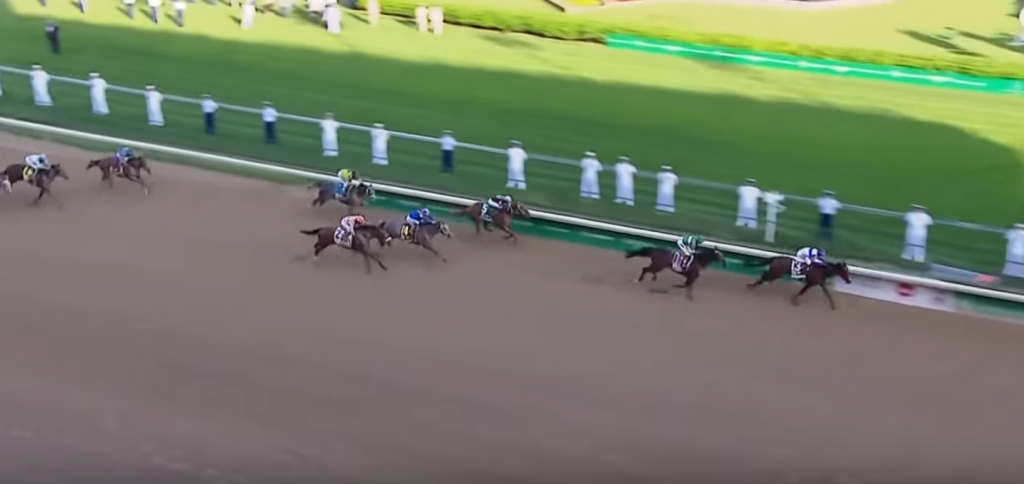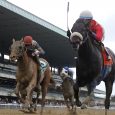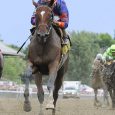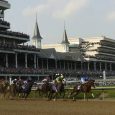
Nyquist bursts to the front in the Kentucky Derby.
Now that the Kentucky Derby is over, we are on to the Preakness. Can Nyquist make it nine wins in a row? A few weeks back I discussed how handicapping the Kentucky Derby is different than your normal daily handicapping in my article 7 Ways That Handicapping the Kentucky Derby is Different. Today, I’m going to look back at those keys to handicapping the Derby and see how they apply to the Preakness.
#1 Pedigree
Pedigree is not as important. Two weeks earlier, you were speculating if your horse could get ten furlongs. Over the last 34 years, about half of the Preakness field last ran in the Derby. This can give you a sense of how they will handle the distance. The new contenders have likely run a mile and an eighth race. Going another half of a furlong is easier to deal with than the full furlong difference one typically encounters in the Derby.
#2 Pace
The pace in the Preakness is going to be a little different. The Preakness has not been dominated by one running style, yet, in recent years, early speed horses and horses that can press the pace have had the most success. Except for the sluggish pace in 2013 set by the wire-to-wire winner Oxbow, the half-mile and three-quarters of a mile times have been consistent averaging about 46.4 seconds for the opening four furlongs and 1:11:0 for three-quarters of a mile. On the occasion the half mile has gone in under 46 seconds, this has set up for stalkers and closers who can get a cleaner trip with the smaller field size. Given the ton of expected early speed in this year’s field, closers should get more consideration here than in the Derby.
#3 The Importance of Jockeys
Jockeys perform close to their Kentucky Derby statistics. Mario Gutierrez has now won two Kentucky Derbies in two tries and will try to win his second Preakness in his second try on Nyquist. The big riders win the big races here. This is as a result of getting good mounts for the Kentucky Derby, catching the better newcomer horses if their Derby horse is not entered and facing a smaller field.
#4 The Importance of Trainers
Unlike the Kentucky Derby, there is less disparity amongst the trainers from how they perform between the Preakness and other stakes races. Doug O’Neill has won the Preakness with I’ll Have Another in 2012, had a fifth-place finish with Goldencents in 2013 and will try to repeat here with Nyquist. Trainers that struggle in the Derby like D. Wayne Lukas have had a much better showing in the Preakness. The exception here is Todd Pletcher, who now has one derby win in 45 tries who is also winless in seven tries in the Preakness.
#5 Form
Over the last 34 years, the favorite has won at a better than average clip — 38.2 percent versus the roughly 33 percent rate that favorites normally win at. The average post-time odds of the Preakness winner over the last 34 years has been about 9-2, with median odds of about 3-1. Only four horses have won the Preakness at odds of greater than 10-1, with a max of 15-1. The bottom line here is that the horses that win the Preakness are in great form. Many will enter direct from either a solid or excusable effort from the Kentucky Derby, which is the great equalizer. These horses are all still generally improving too.
#6 Post Position
Having to speculate on a field of 20 horses is behind us. The Preakness will carry, at most, 14 entries and rarely is that full. The field should be between 10 to 12 horses, so the likelihood of traffic troubles and variable pace scenarios is reduced. Since 1982, the median field size has been 10 horses. While the Kentucky Derby has the dreaded rail post curse (which is more a function of who draws the rail than the post), there is no post bias in the Preakness. Inside posts, outside posts and middle posts have all done equally as well.
#7 Class
In the last 34 years the Preakness has been won 88 percent of the time by a horse that last ran in the Kentucky Derby. The new Kentucky Derby requires the entrants to earn points to vie for entry into the race. This is not the case in the Preakness. There are often local entrants that fill the field either with a couple local wins over the circuit, such as Bodhisattva last year. He entered the Preakness with 11 career starts, mostly on the Maryland circuit with a win in the Federico Tesio Stakes. His only graded stakes effort was a weak fifth-place finish in the Remsen at Aqueduct as a two year old. Other entrants may have just graduated from the maiden ranks such as last year’s second-place finisher, Tale of Verve. While you have the established stakes winners that earned their points to run in the Derby, you have to take a look at the newcomers in Baltimore. Even though they are unproven, they are not always a complete toss and may figure in your exotics.
Realizing the subtle differences in the approach that we took in analyzing the Kentucky Derby will give one an edge in the Preakness.
You can bet on it.




